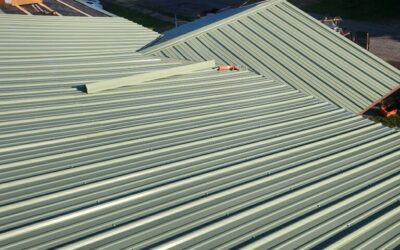Roof Replacement for Rental Properties: A Comprehensive Guide for Ohio Landlords
As a landlord in Ohio, maintaining your rental property’s structural integrity is paramount. One of the most critical components of this maintenance is the roof. A well-maintained roof not only protects your investment but also ensures the safety and satisfaction of your tenants. This comprehensive guide delves into the importance of roof replacement for rental properties, the benefits it offers, and the tax implications you should be aware of.
Understanding the Importance of Roof Replacement
The roof serves as the first line of defense against the elements. Over time, exposure to weather conditions can lead to wear and tear, compromising its effectiveness. For rental properties, a compromised roof can lead to:
- Tenant Complaints: Leaks or drafts can result in discomfort, leading to tenant dissatisfaction.
- Property Damage: Water intrusion can damage interiors, leading to costly repairs.
- Legal Liabilities: In Ohio, landlords are required to comply with building, housing, health, and safety codes that materially affect health and safety. A failing roof can lead to violations of these codes. Ohio Laws
Benefits of Roof Replacement for Rental Properties
1. Enhanced Property Value
A new roof can significantly boost your property’s market value. Prospective tenants often perceive properties with new roofs as well-maintained, allowing landlords to command higher rents.
2. Energy Efficiency
Modern roofing materials offer better insulation, leading to reduced energy bills. This efficiency can be a selling point for potential tenants and can also reduce overall maintenance costs.
3. Reduced Maintenance Costs
A new roof minimizes the need for frequent repairs, saving landlords both time and money in the long run.
4. Compliance with Local Regulations
In cities like South Euclid, Ohio, specific regulations dictate the extent of roof replacements. For instance, not more than twenty-five percent of the roof covering of any building or structure shall be replaced in any two-year period unless the entire roof covering is made to conform with the requirements for new buildings. American Legal Publishing
Tax Implications of Roof Replacement
Understanding the tax implications of roof replacement can lead to significant savings:
1. Capital Improvements vs. Repairs
The IRS distinguishes between repairs and capital improvements. While repairs can be deducted in the year they occur, capital improvements, like a new roof, must be depreciated over time. Stessa+1DoorLoop+1
2. Depreciation Schedule
For residential rental properties, the IRS allows landlords to depreciate the cost of a new roof over 27.5 years using the straight-line method. This means you can deduct an equal portion of the roof’s cost each year over its useful life. Internal Revenue Service
3. Deducting the Old Roof
When replacing an old roof, landlords can potentially deduct the remaining undepreciated value of the old roof in the year of replacement. This strategy, known as a partial disposition election, can lead to immediate tax benefits. Ken-Mar Tax
Steps to Undertake Roof Replacement
- Assessment: Regularly inspect your property’s roof for signs of wear, such as missing shingles, leaks, or sagging.
- Consultation: Engage with professional roofing contractors to get estimates and understand the scope of work required.
- Permits: Ensure you obtain the necessary permits. In Ohio, if you’re replacing or repairing any portion of the wood sheathing supporting the shingles or structural members like rafters or trusses, a building permit is required. Dayton, Ohio
- Documentation: Keep detailed records of all expenses related to the roof replacement for tax purposes.
- Tenant Communication: Inform your tenants about the upcoming work, timelines, and any potential disruptions.
Conclusion
Roof replacement is a significant investment, but for rental property owners in Ohio, it offers numerous benefits—from enhanced property value and energy efficiency to tax advantages. By understanding the importance and implications of this undertaking, landlords can make informed decisions that protect their investments and ensure tenant satisfaction.
If you’re considering a roof replacement for your rental property, consult with local professionals to ensure compliance with Ohio regulations and to maximize the benefits of your investment.
 (440) 307-2060
(440) 307-2060

